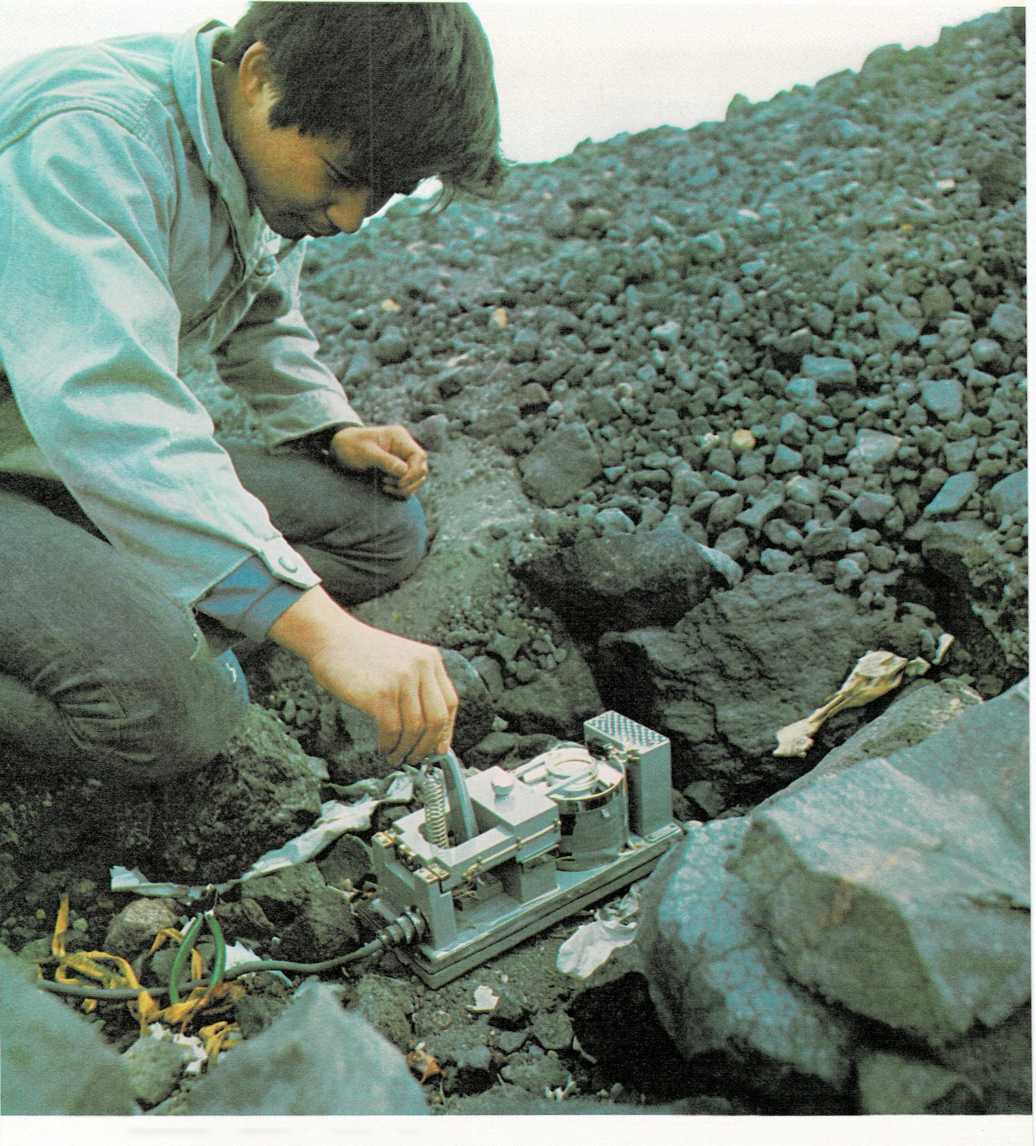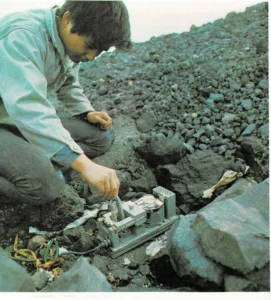Watching for earthquakes
Earthquakes happen all the time. We don’t feel most of them. They are
just small shakes in the earth. But some earthquakes make the ground
tremble, rattle dishes, and even cause buildings to shake. And a few
earthquakes smash and crumple buildings.
Seismologists are scientists who study earthquakes. Seismologists can’t
go underground to watch the rocks push, snap, and break. Instead,
seismologists watch instruments called seismographs. These instruments
help keep track of earthquakes all over the world—- even the quakes we
can’t feel.
Seismographs are usually set on solid rock or inside vaults. There, they
do not pick up vibrations caused by man-made things. But when an
earthquake makes the earth shake, tremble, and shiver, it also moves a
pen in the seismograph. The pen draws squiggly lines on a roll of paper.
Scientists use seismographs in groups of three. This way they can
measure the east-west, north-south, and up-and-down ground motions of
the earth.
A few times, seismologists have been able to predict earthquakes. But
there is still much to learn about what causes earthquakes and when they
will happen.

seismologist checking a seismograph
A seismograph is used to record movements of the earth near the top of
Mount Asama in Japan.

